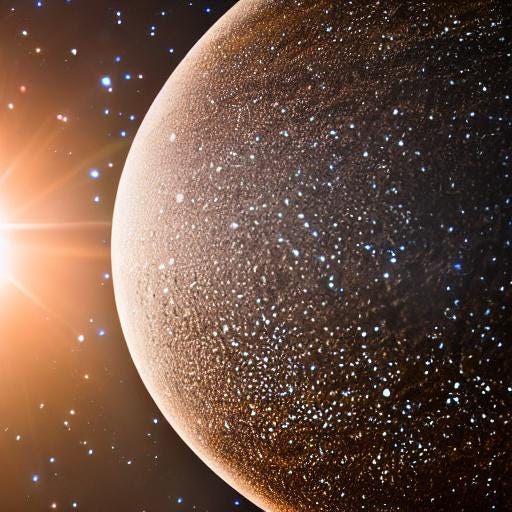TOI-1416 b is a small planet that orbits its host star in a period of just over one day, meaning this planet is super hot — around 1500 ºC to be precise. The planet is about 1.6 times the size of Earth and known as a super-Earth. According to a recent paper which precisely measured its mass, the planet weighs around 3.5 Earth masses.
The planet was initially detected with the Transiting Exoplanet Survey Satellite (TESS), a space telescope completing an all-sky survey searching for the periodic dip in brightness of a star that could indicate the presence of a planet. Once TESS detects what could be a planet, it is promoted to a TOI — a TESS Object of Interest, in this case TOI-1416 (for the star) and TOI-1416.01 (for the potential planet — which, if confirmed, becomes known as TOI-1416 b). The next step is to try and confirm that this possible planet is actually a planet, and not some source of false-positive signal – for example from a background star. To do this, some teams will use telescopes on Earth to follow-up the signals.
In this case, the KESPRINT consortium, an international collaboration of exoplanet scientists (including some Extrasolar Times writers) searches for and characterises TESS-detected planets, used radial velocity observations to confirm the planet and to find its mass. Led by Dr. Hans Deeg, the team used observations from four separate instruments at different telescopes around the world — CARMENES (in Spain), HARPS-N (in the Canary Islands), iSHELL and HIRES (both in Hawai'i) — to search for the presence of this potential planet. Once they confirmed the planet was there (by looking for the wobble of the star due to the gravitational tug on it from the orbiting planet) they were able to estimate the mass of the planet to be around 3.48 Earth masses, with a measurement uncertainty of 0.47 Earth masses. Combining this with the radius measurement from the transit data, of 1.62 Earth radii, they found a bulk density of 4.5 gram per cm3. Based on the density and temperature of the planet, as well as our understanding of how planets might form, the team were then able to make some estimates on what the composition of the planet might be. In particular, they note that the planet it too close to its host star to be able to hold on to a Hydrogen or Helium atmosphere, and its density is too low to be composed entirely of Iron and other rocks. This means that it is possible that TOI-1416 b has a significant fraction of water within its composition. The authors suggest in the paper that:
“a molten interior in which a significant fraction of water is dissolved in magma as
the most promising one [model] to explain the planet’s density.”
The radial velocity observations also give a hint of a potential second planet within this system, with an orbital period of around 28 days. However, this is very close to the orbital period of the Earth’s moon, meaning it is very challenging to be certain if the signal really is caused by another planet orbiting TOI-1416, or if the team has just re-discovered our own moon.
Looking to the future, TOI-1416 b is sure to be a target of interest for atmospheric observations (for example with JWST or the future Ariel mission). Maybe such observations will be able to help confirm the exact composition of this unusual distant world.




